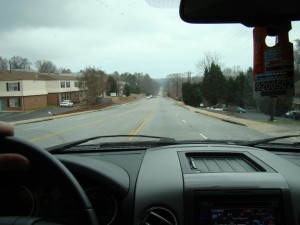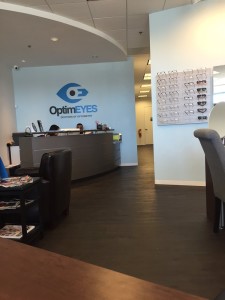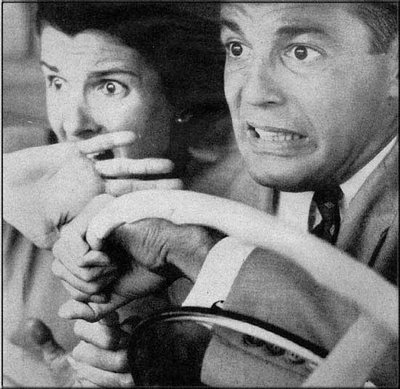Hidden Vision Defects That Affect Your Vision While Driving
It’s a given, that you shouldn’t drive if your eyes aren’t up for the task. In other words, if you can’t see properly, you need to wear the right gear, whether that would be glasses or contact lenses to improve your eyesight. And if you were one of those people who had to wear glasses from the first day you got your license, you most likely noticed a difference if you didn’t wear them. But there’s a dilemma with this issue. There are many people who don’t have much difficulty seeing, yet still have visual issues that could take a toll on their safe driving habits. How?
There’s More to Sight than Seeing Clearly
The average person thinks of sight in a very one-dimensional way. For many people, they think their  vision is fine as long as they can see up close, far away, and see things without a blur. But what most people think of when talking about eyesight is visual acuity, which only refers to the clarity at which an individual can see. Typically, we consider the main vision defects to be nearsightedness, farsightedness and astigmatism. However, many people see perfectly clear, but still drive and carry out other tasks with a struggle that they just can’t seem to shake. So don’t think you’re immune to vision problems just because you’re seeing 20/20!
vision is fine as long as they can see up close, far away, and see things without a blur. But what most people think of when talking about eyesight is visual acuity, which only refers to the clarity at which an individual can see. Typically, we consider the main vision defects to be nearsightedness, farsightedness and astigmatism. However, many people see perfectly clear, but still drive and carry out other tasks with a struggle that they just can’t seem to shake. So don’t think you’re immune to vision problems just because you’re seeing 20/20!
A Faulty Connection
Remember, your eye isn’t the organ responsible for making sense of what you see; that’s a job your brain takes care of. Light enters the retina, where it’s absorbed by the photoreceptor cells. While we won’t go too much into the process, it’s important to know that your optic nerve carries the information your eyes receive to the brain, where it gets processed. It’s here, where you actually make sense of what you see. At this level, visual perception becomes possible. Unfortunately, many people who see clearly have problems with their perception.
Visual Processing Disorders
Scientists and medical professionals have only recently begun to acknowledge a brand of conditions known as visual processing disorders. This label encompasses a wide range of eye problems that many people are unaware of; they may only learn about it if a friend tells them a family member suffers from such a condition, or if it was the topic of a news segment. Unfortunately, there are people who don’t know that they have these disorders.
A Look at Visual Deficits & Their Effects on Driving
Vision is more than just what you see, it’s all about what you perceive. For those with processing difficulties, their perception may be faulty.
- Visual Discrimination – Individuals who have deficits with this skill have trouble seeing differences between certain objects, colours and people. In terms of driving, problems with visual discrimination could affect one’s ability to see the differences in sign postage, traffic lights and road surface types.
- Visual Figure-Ground Discrimination – If a driver has problems with this skill, they are likely to have trouble separating objects from backgrounds. For example, a person may not be able to use the “big picture” their instructors taught them about. Objects in the foreground could look more like background sights.
- Visual Sequencing – This skill involves the ability to distinguish the order of images, symbols or words. A deficit in visual sequencing could make it difficult for someone to read signs properly and make sense of directions.
- Visual Motor Processing – Motor processing is all about the visual feedback (which you receive from your eyes) to execute body movements. Difficulties with motor processing can make a driver feel clumsy when it comes to braking, steering, shifting gears or making an evasive maneuver when necessary.
- Visual Memory – As its name suggests, visual memory is all about recalling what you see. Deficits in both short and long term visual memory can make any decision or action risky. For example, if a driver can’t remember seeing a car in their rear view or blind spot a few seconds ago, they may steer right into another motorist while making a lane change.
- Visual Closure – The skill of visual closure enables a person to discern an object even if they can’t see all of its parts. For example, this ability allows you to recognize logos that aren’t complete objects as complete objects (such as the WWF panda logo). A lack of visual closure on the road could lead to confusion when reading signs or trying to judge only partially visible objects or obstacles.
- Spatial Reasoning – Almost everything related to driving involves spatial relationships. Spatial reasoning troubles make it hard to judge time, distances and interpret directions. These issues can make driving very frustrating of course, as it can lead to a driver getting lost, missing appointments and even put them at a higher risk for accidents.
Do These Issues Sound Familiar?
Now some of you are reading about these problems, and think that you don’t have any of these issues. It’s safe to say that the majority of you reading this post don’t have any outstanding visual problems. But these disorders can strike in more subtle ways. Even if you don’t notice an immediate problem with your eyes, you could feel less overt symptoms.
 Ever Feel Like this When Driving?
Ever Feel Like this When Driving?
- You find it hard to concentrate on too many things at once
- Unsure of when to switch lanes or make turns
- Always narrowly escaping collisions (honked at, other drivers swerve away)
- Need your passengers to tell you when a car is in your blindspot or approaching
- Quickly tire out (mentally) from all of the decisions you have to make while driving
- A family member has pointed out a weakness in one of your driving skills
- You yourself question your ability to drive safely and efficiently
Some of these “signs” are normal, if only experienced from time to time. However, if you are always on edge about driving, the problem could stem from a hidden vision defects. If you’re unsure about it, first take a look at your history. Did you have trouble concentrating or remembering certain things in school? Were you prone to making certain mistakes or having certain accidents? You may start to see a pattern that could point out a visual deficit. Of course, if you suspect that it is a problem, it would be best to see an optometrist about your concerns.
an optometrist about your concerns.
Beyond the Surface of Normal Eyesight
From now on, think of your eyesight as much more than just how clearly you can see. It’s a complicated process that involves the intake of information, and the quick transformation of this info into sights you can make sense of. And it has to happen fast. As a driver, a slight glitch in your visual system can have a profound effect on your performance behind the wheel, even if it’s subtle. So if you suspect that you may have a visual disorder (other than not seeing clearly), visit your optometrist for an assessment of your eyes. Doing this can take a lot of pressure out of your daily drive.






